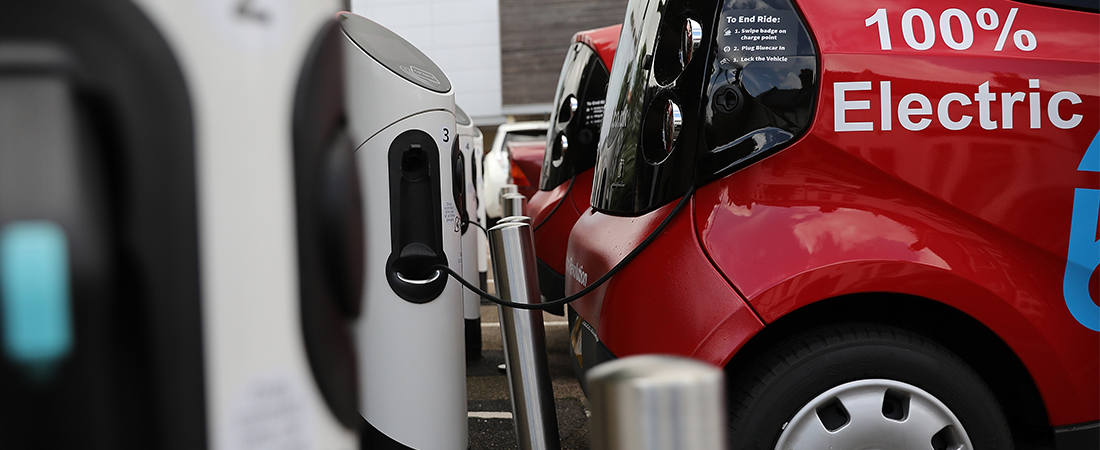World leaders and delegates are gathering in Glasgow today as part of COP26’s ‘Race to Zero Transport Day,’ which aims to build support for decarbonising road, aviation and maritime transport as soon as possible, with the message that we are fast approaching a tipping point. The task facing them is daunting, to say the least. Transport currently accounts for 24% of direct CO2 emissions, so it’s no surprise world leaders view vastly reducing transport emissions as non-negotiable if we are to reach net-zero carbon emissions by 2050.
The task is clear, but the path remains less straightforward. Aviation and maritime present particular challenges, with electric boats and planes yet to catch on. In the case of road transport – which still accounts for around 10% of global carbon emissions – it’s fair to say things are, comparatively, a little easier. There’s also been considerable progress on this front, with many nations committing to phasing out sales of internal combustion engine (ICE) vehicles in the next 15 years. The UK has said that it will ban sales of new petrol and diesel cars by 2030, with sales of some hybrid models continuing for a time-limited period, ahead of a full ICE ban in 2035.
These are lofty ambitions, and there’s no doubt the UK is a global leader in terms of its phase-out target. For this, the Government should be commended. However, this is only part of the picture. Between now and 2030, significant barriers limiting electric vehicle (EV) take-up must be overcome – 2020 was hailed as the year of the EV, with a 66% growth on 2019, and as of the end of October this year, there were 345,000 pure-electric cars on UK roads. This is impressive progress. However, despite this, just 8% of people expect to buy an all-electric car next. Why? Well, time and time again, there are two factors cited by would-be EV divers; vehicle cost and a lack of charging infrastructure.
Let’s take infrastructure first. The number of chargepoints needed between now and 2030 is the subject of debate and partly depends on the overall charging model. For example, the more people with home chargers should, in theory, mean we don’t need as many public chargepoints. Similarly, more rapid chargepoints at motorway and service forecourts will mean fewer on-street chargepoints. The Society of Motor Manufacturers and Traders (SMMT) estimates the UK needs 2.3m chargepoints by the end of the decade. To put that in perspective, there are currently around 20,000. This means the UK must install 700 electric vehicles (EV) charging points every day for the rest of the decade. A long way from the current rate of just 42 per day. However, it’s worth pointing out, this will also depend on the quality and speed on chargers, with more rapid chargers reducing the overall amount needed.
Linked to this, there is a range of issues related to infrastructure provision, including reliability, data sharing, accessibility and signage and weatherproofing.
The challenge the UK and governments around the world are grappling with is that the EV market is not like many new and emerging markets, which are principally demand-led. Conversely, provision must come ahead of demand; ultimately, people will not start buying EVs en masse until they see charging infrastructure on their street or at their local petrol station.
Partly in response to these issues, the UK Government is shortly due to launch a ‘Charging Infrastructure Strategy.’ It also launched a consultation on the ‘Consumer Experience at Public Chargepoints’ and will formally respond soon.
Challenges are not just limited to infrastructure with the price of new EVs – largely due to the cost of the battery itself – a barrier for many consumers. The expectation is costs will come down with time, but only when more people start buying EVs. A classic case of chicken and egg.
To address this, the UK Government launched the Plug-in Car Grant (PiCG) in 2011, which did for a time succeed in bridging this gap. But to the frustration of many vehicle manufacturers, the PiCG has been tapered back over recent years, and there are signs it could be phased out altogether. The Government has said this is because of increasing demand. However, with profit margins on new vehicles famously slim at the best of times, unless more consumers are willing to stump up the extra cash for an EV, manufacturers risk selling cars for little or no profit.
Clearly, when it comes to transport, the ambition to win the ‘Race to Zero’ from the UK and others is not in question. But, ambition will only get us so far, and delegates in Glasgow would do well to keep some of the above challenges front of mind during today’s discussions.

